1. The Curled-Up Ball
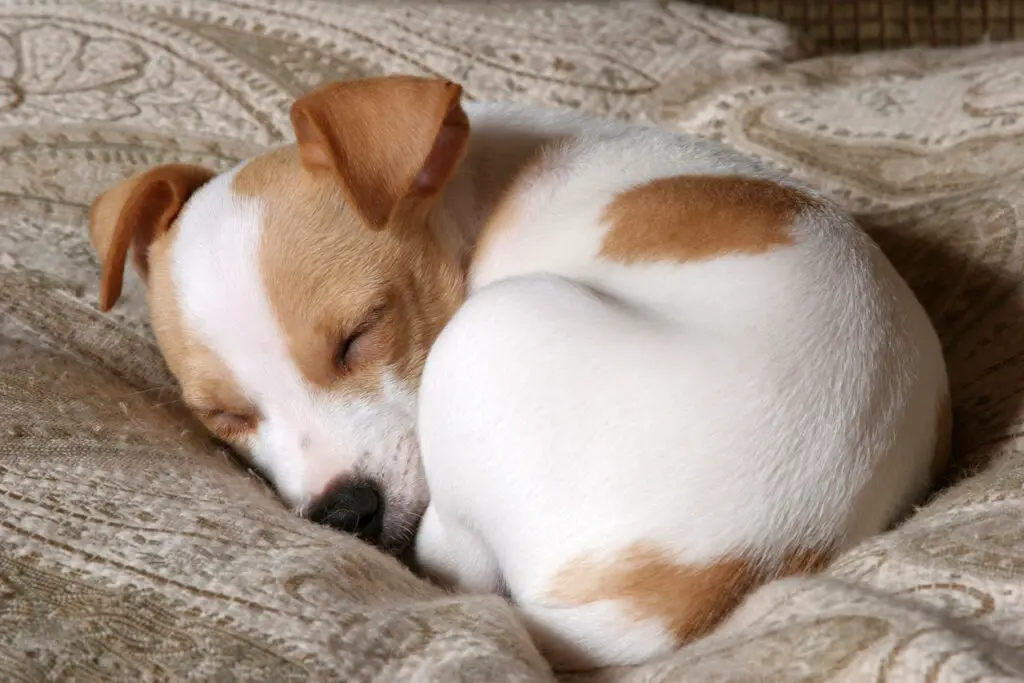
Your dog’s favorite sleeping position isn’t just about comfort—it’s a window into their personality, instincts, and emotional world. From belly-up sprawlers to nose-tucking loafers, how your pet naps can reveal how they feel about their environment—and about you. Here’s what 16 common sleep styles might be saying, even when your dog isn’t.
When your pet curls into a tight ball—nose tucked toward tail and limbs pulled in—they’re conserving body heat while protecting their vital organs. This is a natural instinct, especially for animals that once slept in the wild. It suggests a personality that values security and comfort. Pets who prefer this position are often sweet, affectionate, and gentle. They may be slow to warm up to new people, but once they trust you, they’re fiercely loyal companions.
2. The Side Sleeper

Lying stretched out on their side is one of the most relaxed and vulnerable sleeping positions a dog can choose. It signals total trust in their surroundings. Pets who sleep like this feel safe, loved, and content. They often have calm temperaments and enjoy strong emotional bonds with their humans. Side sleepers tend to be affectionate, carefree, and well-adjusted.
3. The Superman (Belly Flop)
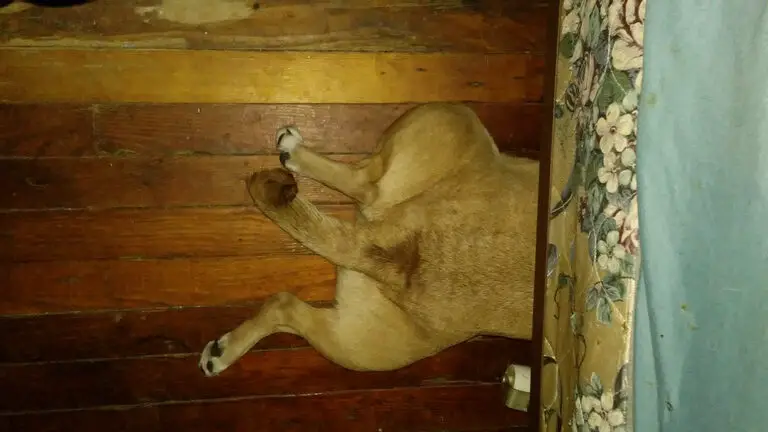
This position—belly flat on the ground, front and back legs stretched outward—is common in puppies and high-energy dogs. It allows them to pop up and play at a moment’s notice. Known as the “Superman” pose, it’s a favorite of playful, enthusiastic pets who don’t want to miss a thing. These animals are full of life, easily excited, and ready for action the second they wake up.
4. The Belly Up Sleeper (Back Sleeper)
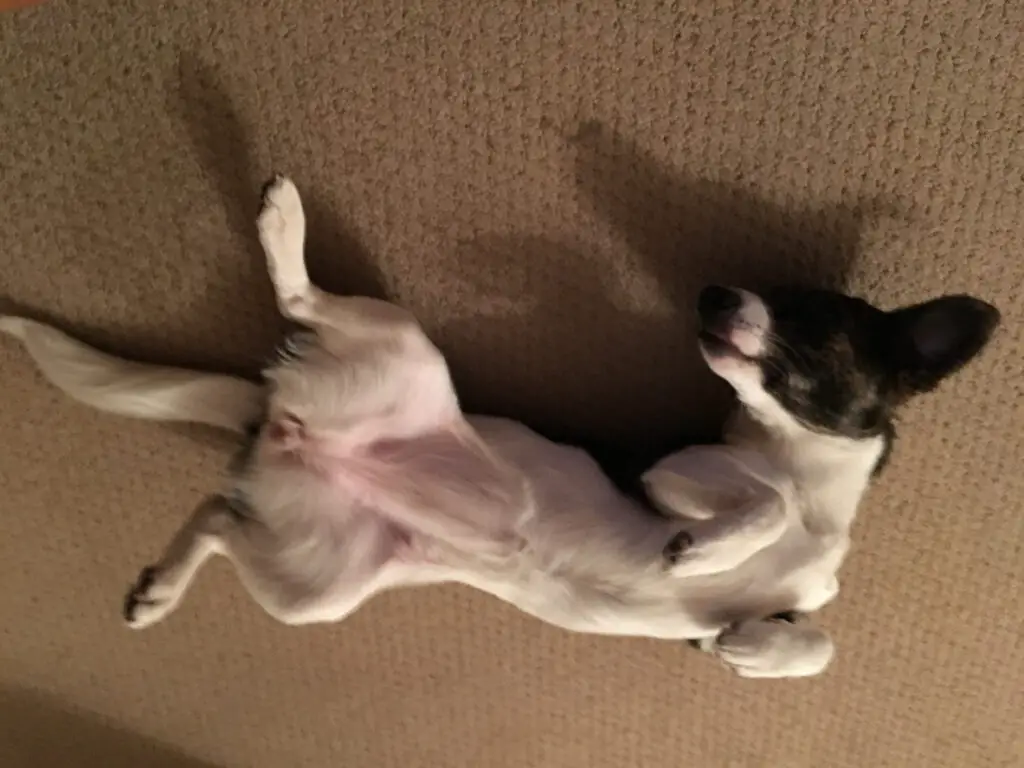
A pet lying on its back with all four legs in the air and its belly fully exposed is showing complete trust and relaxation. It’s a position of extreme vulnerability, so pets who sleep this way feel totally secure in their environment. This posture is often seen in confident, independent, and sometimes goofy animals who are perfectly happy just being themselves.
5. The Loaf Position

In this compact position, your pet tucks their paws underneath their body, resembling a loaf of bread. It’s especially common in cats, but some dogs do it too. The loaf pose allows them to rest while staying semi-alert. These pets are calm, self-contained, and observant. They prefer to relax without fully letting their guard down and may be quick to respond if something interesting happens.
6. The Back-to-Back Sleeper
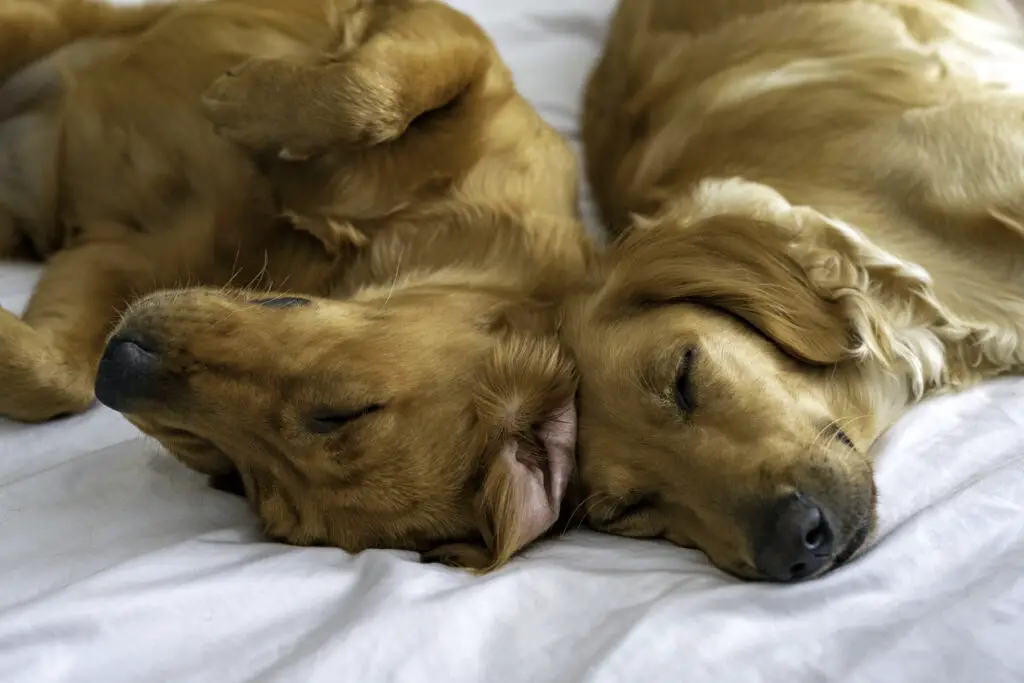
If your pet curls up against your back—or another pet’s—it’s a strong sign of love and social connection. In nature, pack animals often sleep close to each other to share warmth and protection. This position reveals a deep level of trust and a strong desire for companionship. Back-to-back sleepers tend to be affectionate, social, and emotionally bonded.
7. The Burrower

Whether it’s under a blanket, inside a pile of laundry, or nestled in a tight corner, pets that burrow love being wrapped in warmth and softness. This sleeping style points to a need for comfort, security, and sometimes even anxiety relief. Burrowers often have sensitive, affectionate personalities and seek close physical contact with their humans or surroundings.
8. The Head-Or-Paw Draper
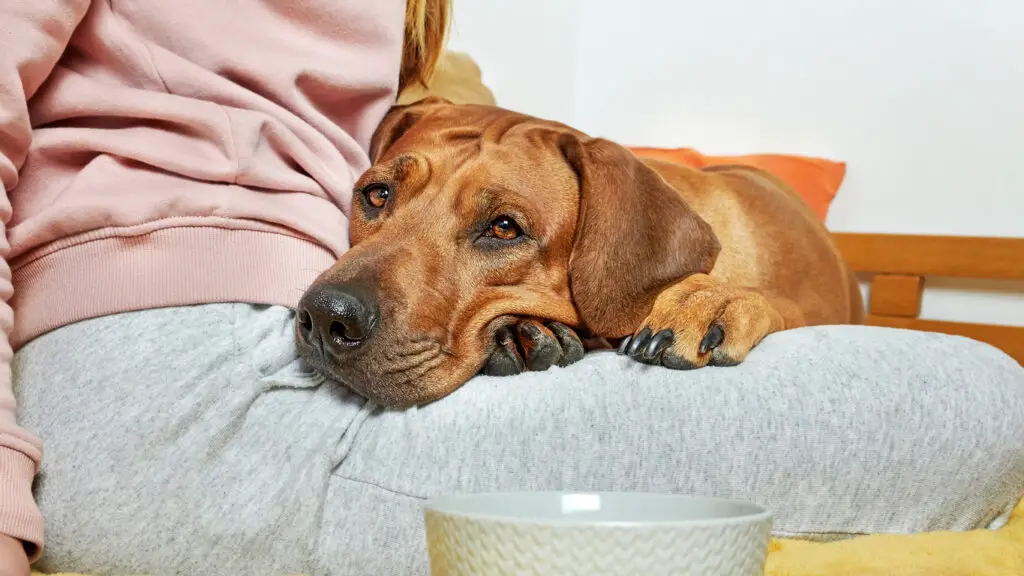
When your pet rests their head or paw on you, the couch arm, or even another pet, they’re signaling emotional closeness and a touch of possessiveness. This behavior suggests a protective and deeply attached personality. These pets like to stay connected—physically and emotionally—and want you to know they’re there.
9. The Tummy Tuck Position
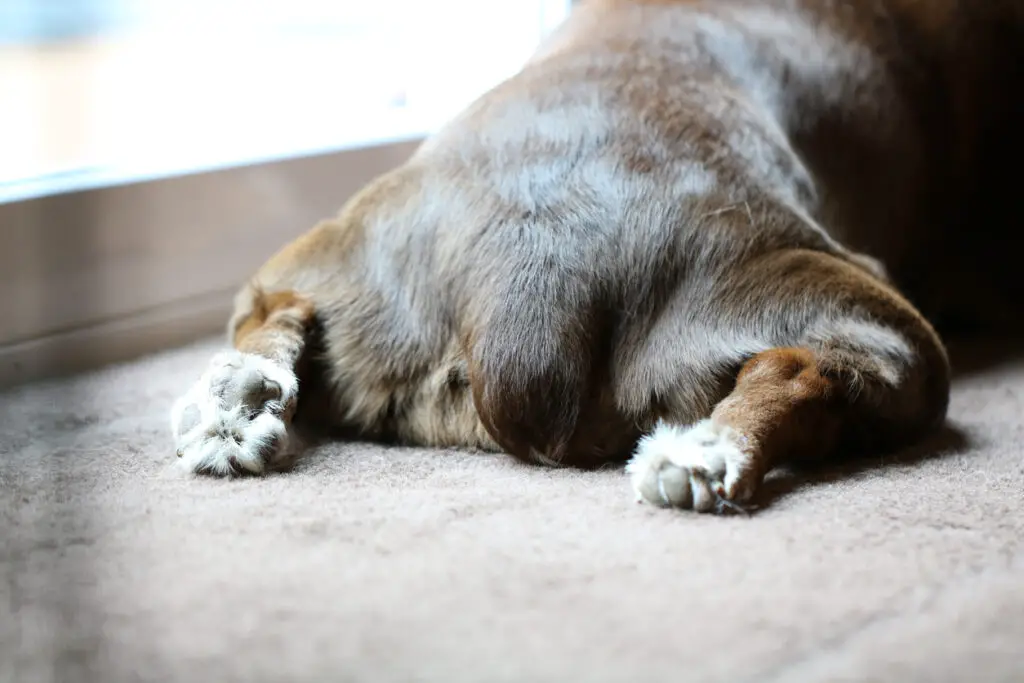
This is when your dog lies on their belly with all four legs tucked underneath, almost like a loaf but flatter to the ground. It’s a semi-alert position, allowing for quick movement if needed. Pets that sleep this way may be cautious, observant, or simply more sensitive to changes in their environment. They’re resting, but they’re not letting their guard down completely.
10. The Sprawler
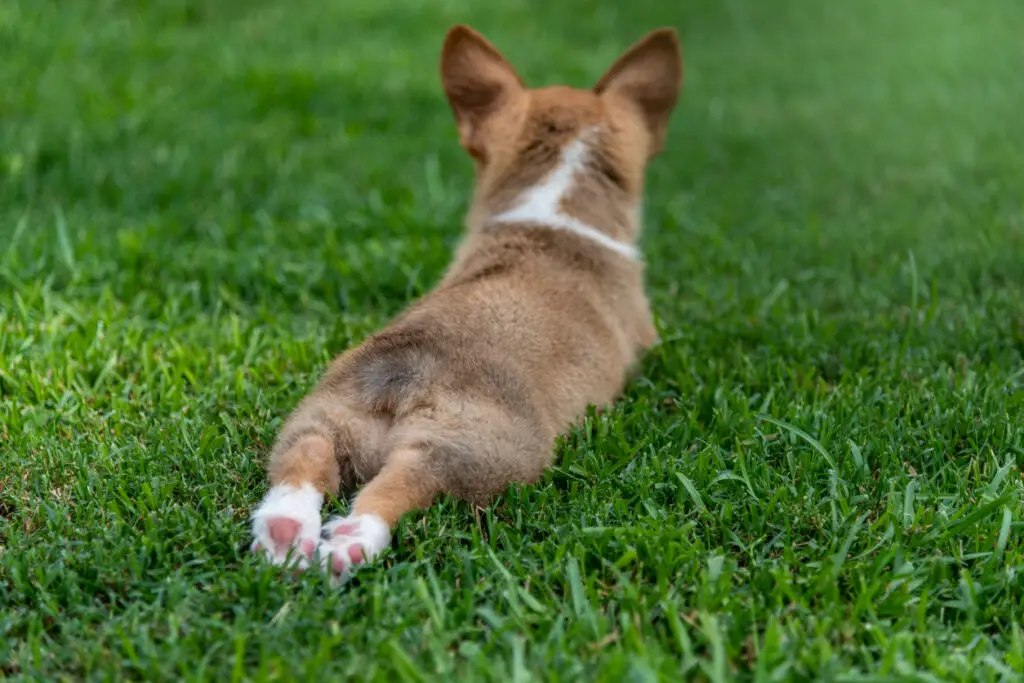
A sprawler takes up as much space as possible, limbs extended in every direction. This is a bold, relaxed pose that screams confidence. Pets that sleep like this feel safe, secure, and entitled to comfort. They often have outgoing personalities and are unbothered by stress or disruption. They know they belong—and they act like it.
11. The Nose-Tuck Sleeper
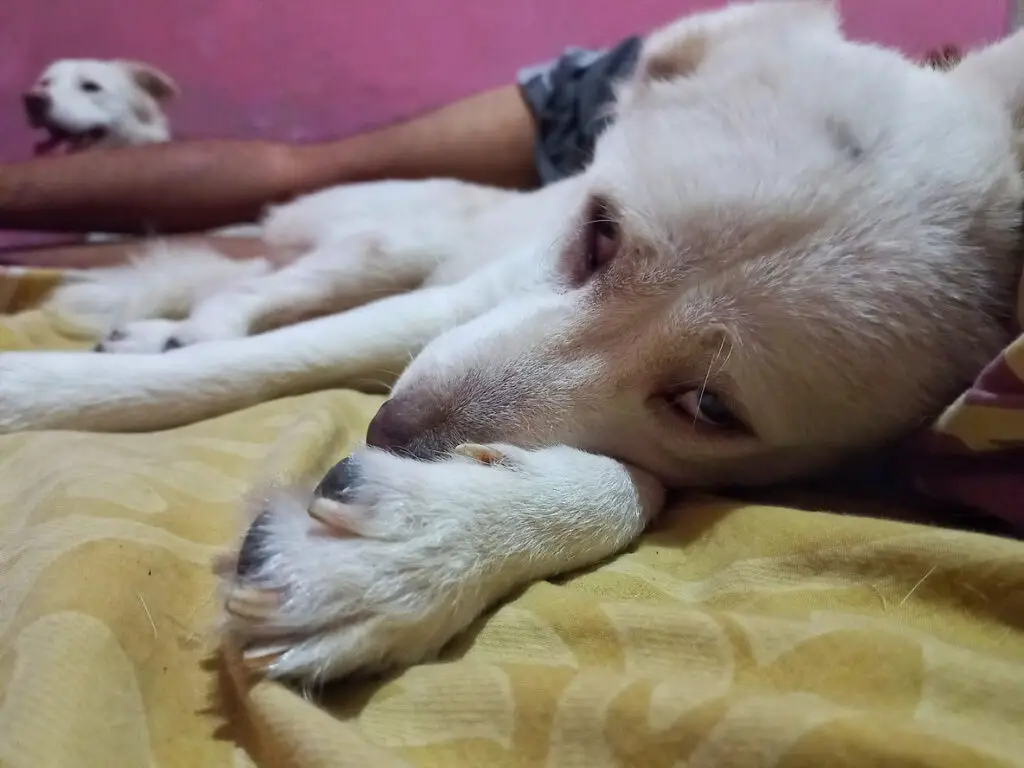
When your pet tucks their nose under a paw or tail, it’s typically to preserve body heat. But it can also suggest shyness or sensitivity. This position creates a safe, enclosed feeling. Pets who sleep this way may be gentle, quiet, and in need of extra comfort during rest. It’s a subtle sign of emotional vulnerability.
12. The Snuggler (With Toys or Objects)
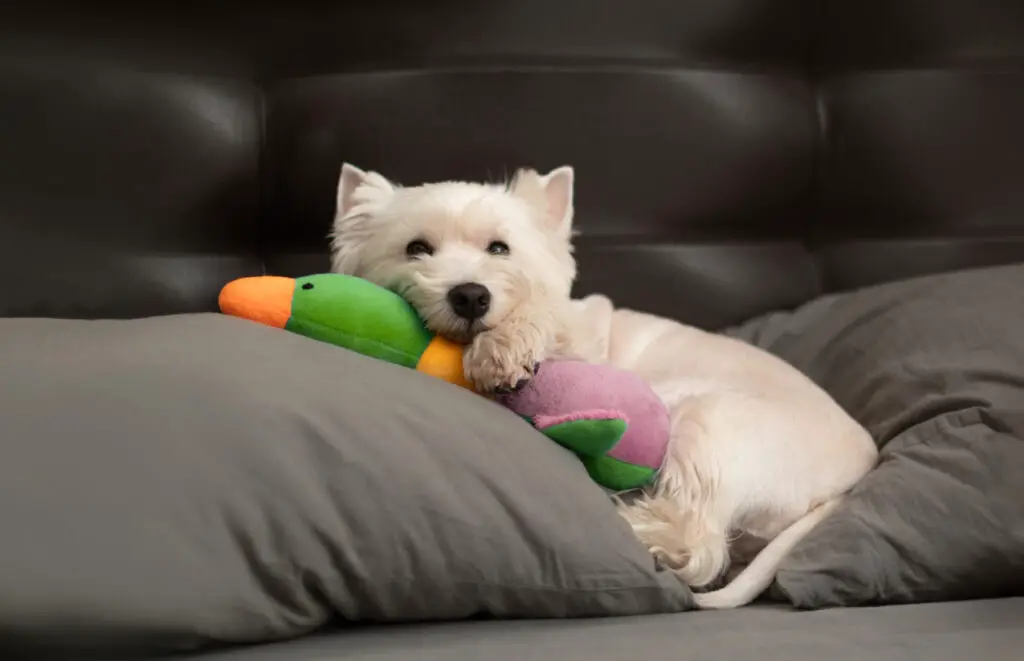
Some pets sleep curled around a toy, blanket, or even your shoe. This behavior signals emotional attachment and a need for comforting objects. These snugglers are affectionate and nurturing, often forming strong bonds with their humans and surroundings. If they’re cuddling a toy, it might even reflect a parental instinct—or just a soft spot for security.
13. The Half-Eye Open Sleeper
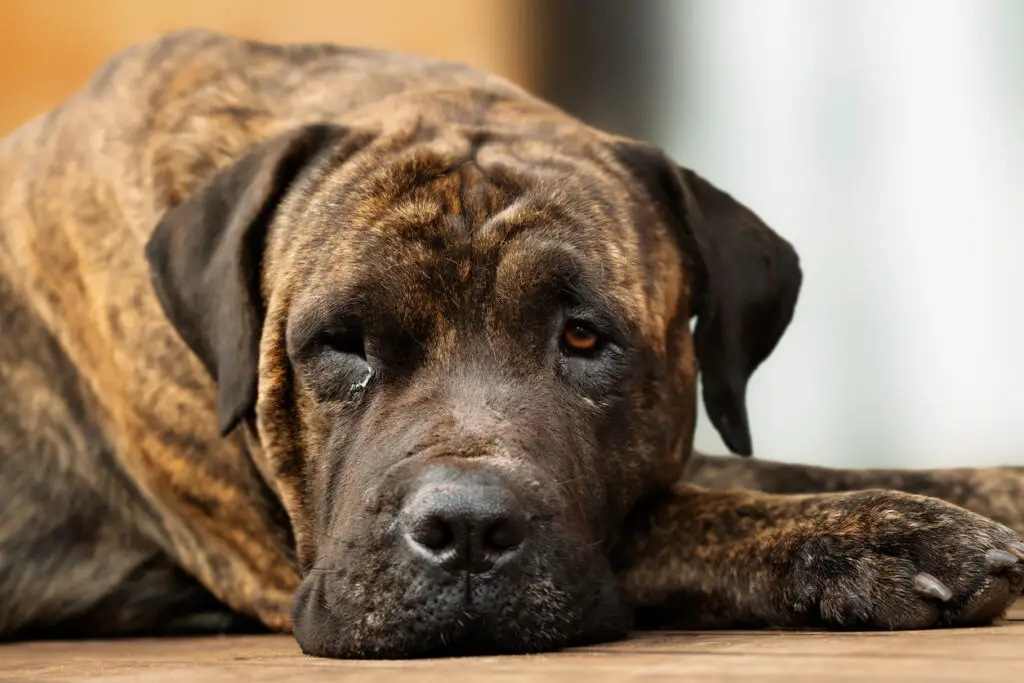
If your pet seems to nap with one eye half open or a single ear perked up, they’re in a state of semi-alertness. This is common in protective breeds or anxious animals. These vigilant sleepers may have strong guarding instincts and feel responsible for monitoring their environment, even when resting.
14. The Lap Lounger

A dog that consistently chooses your lap as their napping spot is telling you one thing: you are home. Lap loungers crave physical closeness and find their greatest comfort pressed right against you. This behavior reflects deep emotional bonding and a pet who sees you as their ultimate source of love and safety.
15. The Sunbather (Sleeping in Sunny Spots)
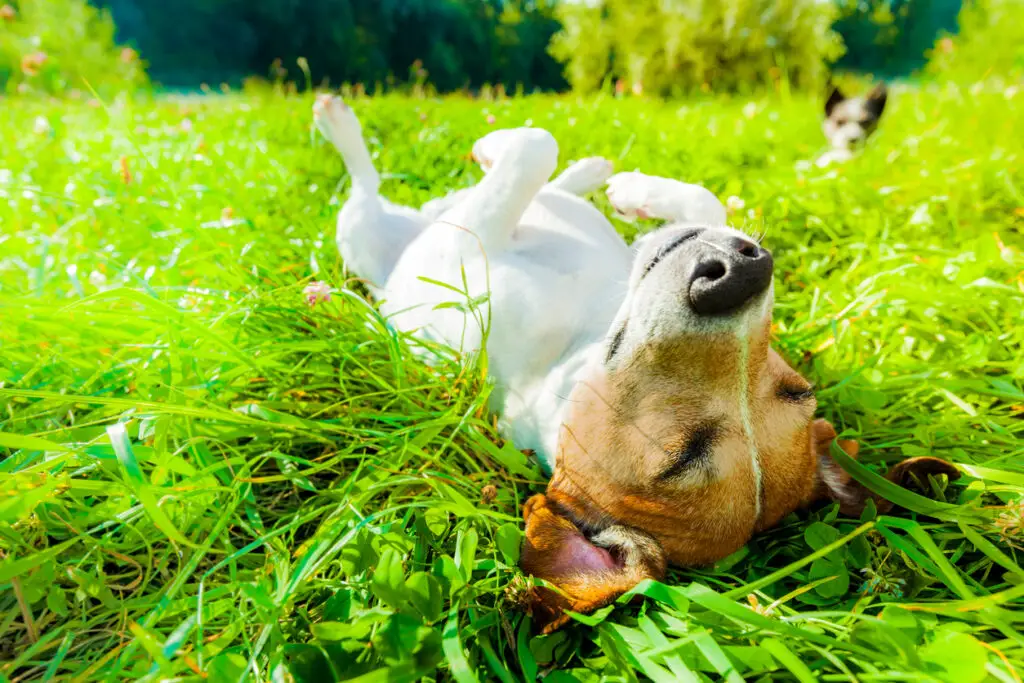
If your pet seeks out patches of sunlight to nap in, they’re a master of comfort. Sunbathers love warmth and ease, often having mellow, contented personalities. These are pets who know how to relax, enjoy the little things, and find joy in cozy routines.
16. The Twist and Turn Sleeper
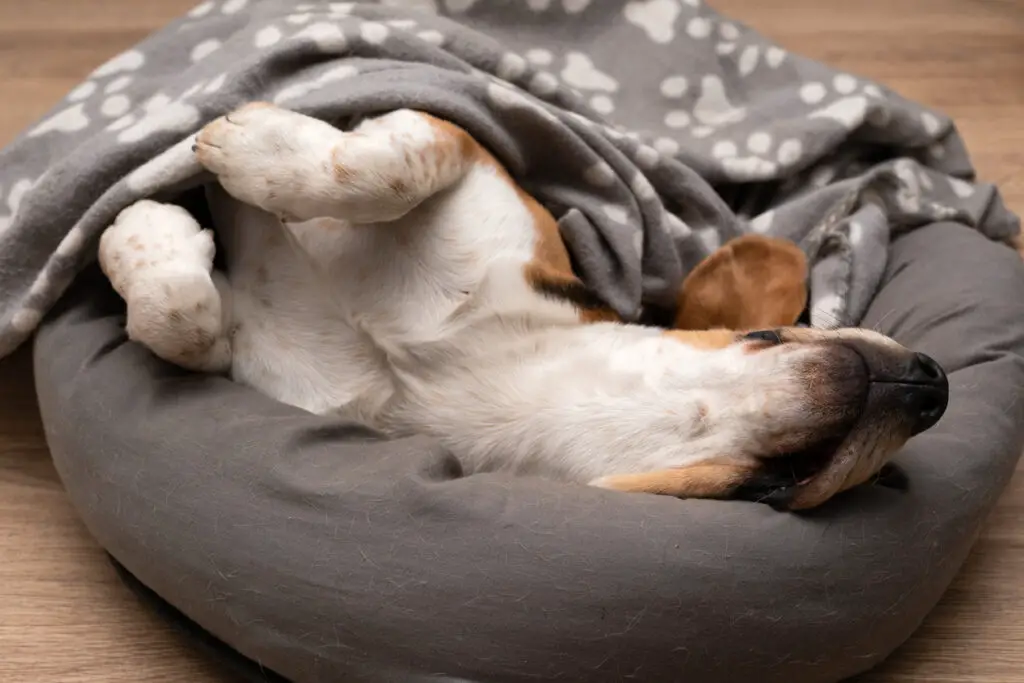
Some pets constantly change sleeping positions—curling up, stretching out, flopping on their side. This movement suggests a restless, curious, or adaptable nature. These are high-energy pets or deep thinkers who don’t fully power down, even while they sleep.
Whether your pet snoozes belly-up, nose-down, or tucked beside you, their sleeping style can reveal more than just their favorite cozy spot—it offers a glimpse into their heart, instincts, and how deeply they trust the world around them. Next time they nap, take a closer look—you might learn something new about your furry friend.


